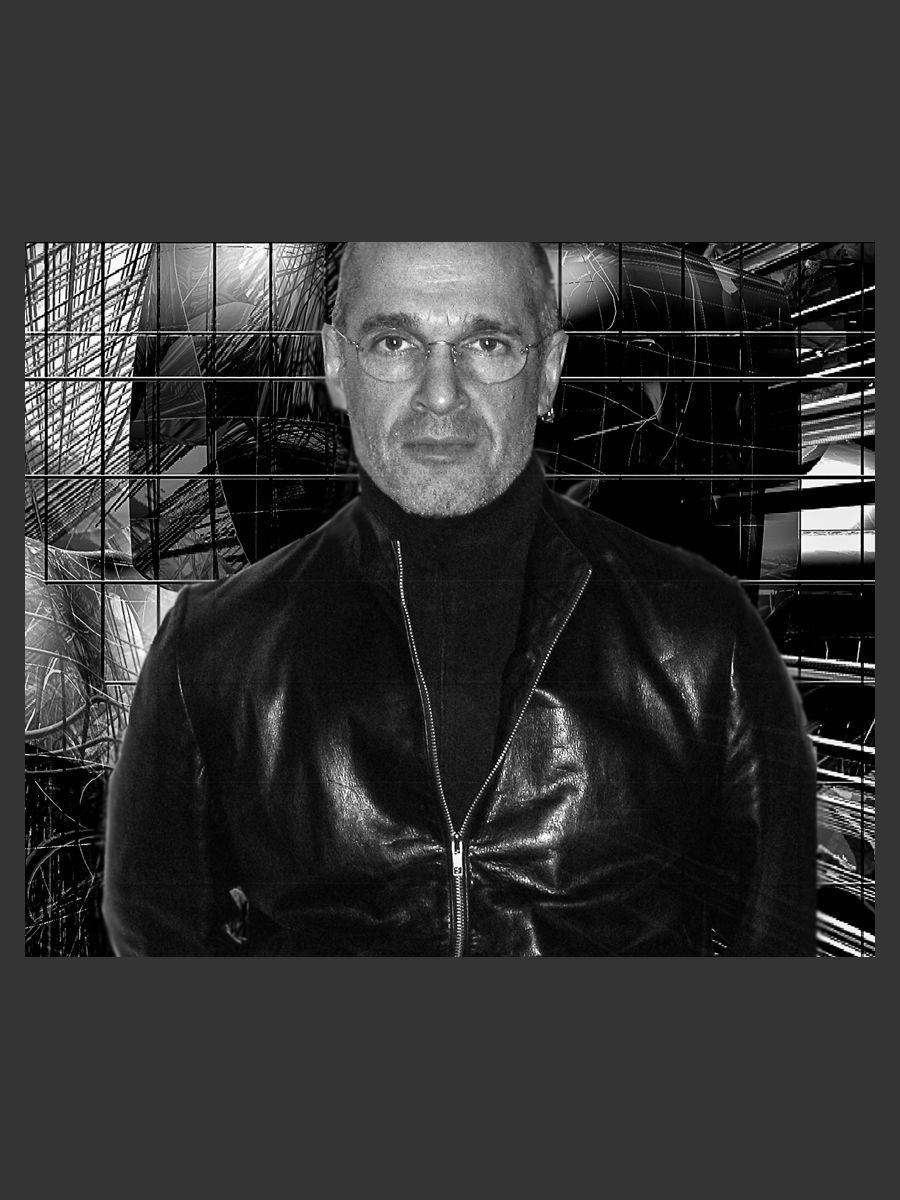
Ron Greene was formally trained as a multi-disciplined architect, industrial designer, photographer and fine artist. He studied with Rowena Reed, Phillip Perkis, Lebbeus Woods as well as many others in his chosen disciplines. He lives and works in New York City.
- The Drawings:
- In an attempt to illustrate abstract relationships between what is real, and our “filtered” perception of reality, using both analog and digital drawing and painting and an array of computer modeling and imaging software, the artist focuses on the relationship between objects existing in space, and the space in which the objects reside, content versus container. He deals with what the 20th Century philosopher Michel Foucault referred to as “other spaces”, the space in a reflection, in a shadow, in a conversation, or in silence. Initially his constructs are developed within complex architectonic parameters, forming elements in virtual space. Using a broad range of digital drawing, 3-D modeling and deformation tools, as well as an array of post-production imaging software, the forms are adjusted, or “sculpted” so to speak, and their behavioral characteristics manipulated until they reach a level of formal and thus spatial tension. The drawings are built up over time, in as many as 180 drawing layers, resulting in an illusion of denuded space that seems to continue deep into the drawing. The observer is drawn through a portal of his own subconscious. As his eyes allow his mind to enter these images, the familiar signposts of 3-D space, light and dark surface modeling, and the conventions of 2-D representation in general, cause many to think they are looking at photographic manipulation, but no photographic source material is used. The drawings challenge the convention of modernism and employ the latest technology to realize a new potential in the exploration of perception.
- Unlike their architectural built counterparts, the space/time environments captured in these images, are intuitive responses to non-programmatic events occurring in the physical world. In each of their iterations, ”parent” typologies are unfolded, examined, exposed and “remapped”, resulting in an unreal self-referential “Virtual-World” turned back in on itself. Unlike traditional wet media, technology enables the artist to experience discovery and at times “fortuitous mistakes” in relative real-time, and create permutations or “children”, without altering the original, or “parent” image. This often non-linear methodology allows for considerable experimentation, and results in a wide variety of spaces that are of a non-Euclidean nature. Much as in the human condition, these models of the external world become a reflection of one’s internal state, and visa-versa.
- In this collection of drawings, the artist has immersed himself in an inwardly turned hyper-world of the unreal. His work is not without formal precedent however, and Greene admits that he does not create in a vacuum and thus owes much to many. Among his influences he lists the painters Max Ernst, Salvador Dali, Mark Rothko, DiChirico, Yves Tanguy, Fernand Léger and Pavel Tchelitchew, sculptors Antoine Poncet and Robert Graham, philosophers Jean Baudrillard and Michel Foucault, as well as a long list of architects known for both built and theoretical work, including Lebbeus Woods, Raymund Abraham, Enric Miralles, Tom Mayne, Santiago Calatrava and Zaha Hadid and engineers Peter RIce, and Pier Luigi Nervi. Like for many within his discipline, his eyes are constantly informed and refreshed by what he sees and reads on a regular basis. The process is never ending and the possibilities are without limit.
- The artist has chosen to pursue a personal and at times dark inquiry that has resulted in a unique, and in some cases Kafkaesque, reactive body of work. It is the artist’s intent to investigate, uncover, and at times provoke, but not to instruct. They are after all only a personal vision. The drawings should be seen as seductive, yet without conclusion or resolution. They are woven of the fibers of architectural dreams and at times nightmares, realistic, but not real, to be entered, but not built.
- The Photographs:
- Conventional pigment based imagery as well as photographs attempt to frieze the moment, so as to encapsulate space-time. Greene’s methodology however seems to encourage entry into it, to look beyond what is immediately visible, thus the implication is no longer static. In and of themselves, the artist’s photographs, along with his ongoing book of pencil sketches, function as an integral part of his daily visual analysis and archive, of how he perceives the world, taking both macro and micro points of view, depending on what enters his visual field. The underlying notions of what he explores in his drawings, such as “other spaces” is repeatedly reinforced by the width of the net that he chooses to cast in a given instance. His photographs, when viewed separately from his drawings, hold their own weight, but when seen in conjunction with his drawings, take on a completely different meaning. They seem to assume the role of passage keys to his enigmatic drawings. Although quite different in visual vocabulary, each discipline informs the other.
- Note:
- In the coming months, this website will offer multiple examples of his works in a variety of media in different disciplines.